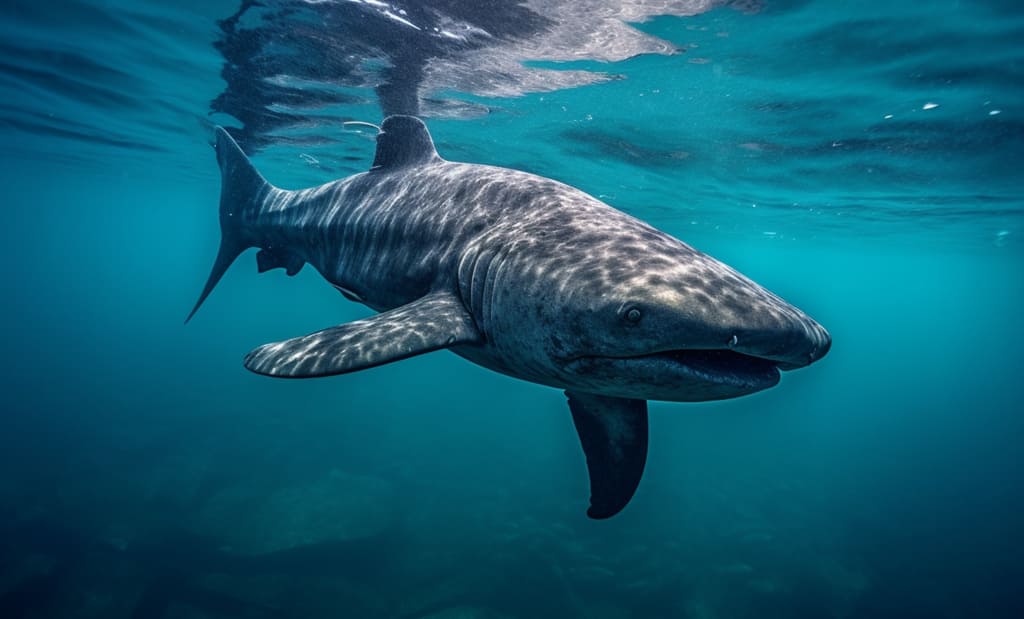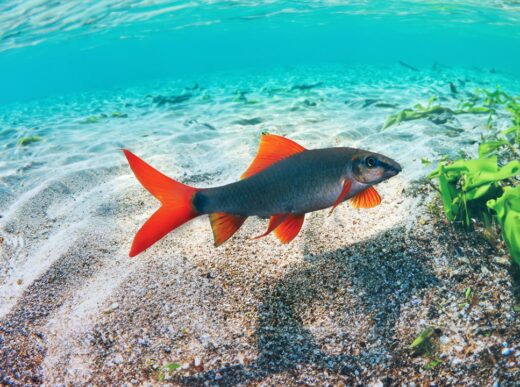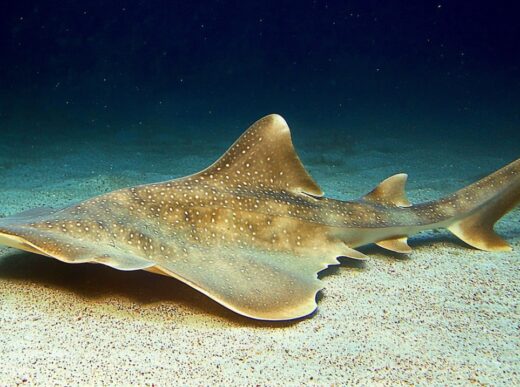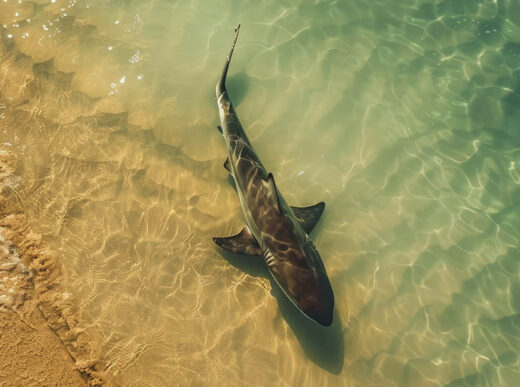Dive into the depths of the ocean with us as we uncover the mysteries of Greenland sharks! These remarkable creatures, also known as polar sharks, call the northernmost regions of the world home, from Greenland to the waters off the coast of Novaya Zemlya. We’ve compiled 20 fun and fascinating facts that will give you a whole new perspective on these extraordinary creatures.
20 Amazing Facts About Greenland Sharks
Let’s embark on an exciting journey through the mysterious waters where sharks reign supreme.
Characteristics
1. The Greenland shark is a proud member of the Somniosidae family. That’s why you often hear the term «Polar» added to its name, and in some circles, it goes by the moniker Lesser Headed Polar Shark.
2. This shark is no small fry, usually spanning from 2.5 to 4.8 metres. Pushing its limits, it can tip the scales at a whopping tonne and stretch up to 7 metres.
3. Sporting a cylindrical body with an elongated head and a snub-nosed snout, the Greenland shark stands out. Despite its size, it rocks surprisingly petite gill slits.
4. When it comes to wardrobe choices, the Greenland shark showcases hues from pale grey to dark brown. To spice things up, some individuals flaunt white spots or dark stripes on their back.
5. The Greenland shark is a true Methuselah in the shark world, boasting exceptional longevity. It not only lives for an extended period but continues growing throughout its entire life.
6. Want to guess its age by size? A three-meter shark could be around 250 years old, while a five-meter giant might have gracefully aged to 500 years! It’s like the Greenland shark adds an average of 1 centimetre per year to its life’s story.
Habitats
7. As one of the northernmost sharks globally, the Greenland shark proudly roams the waters of the North Atlantic and Arctic Oceans. Thriving in chilly temperatures ranging from +0.6 to +12 degrees Celsius, it’s a true cold-water enthusiast.
8. The Greenland shark’s territory extends along the coasts of Canada, Greenland, Iceland, Norway, Russia, and the icy expanses around Svalbard Island.
Lifestyle
9. Greenland sharks prefer the coastal regions within the continental shelf zone. They’re versatile navigators, venturing near river mouths and skillfully hunting in the dynamic surf zone.
10. During the summer, these sharks typically reside at depths ranging from 100 to 500 meters, while in the winter, they ascend towards the surface. Remarkably, some intrepid Greenland sharks have been documented at staggering depths of 2200 meters.
11. Renowned for their unhurried pace, the Greenland shark holds the title for the slowest among all sharks, with a maximum speed of merely 2.7 kilometers per hour. Even a casual stroll could easily outpace these leisurely swimmers!
Eating habits
12. Greenland’s sharks are quite the opportunistic eaters, with a diet comprising fish, rays, and small sharks. On occasion, they even venture into hunting seals.
13. Interestingly, there have been documented cases of these sharks attacking polar bears and reindeer.
14. Frequently, these polar sharks are seen trailing fishing vessels, likely lured by the scent of carrion.
Intelligence and Social Behavior
15. Greenland’s sharks are known to form small groups, with populations sometimes consisting of up to 10 individuals. During the summer, they might even come together in larger packs.
Reproduction
16. Believe it or not, Greenland sharks take their sweet time growing up. They hit their ‘adulthood’ at a whopping 150 years! And get this, pregnancy for them lasts a staggering 18 years – it’s like a never-ending family planning journey. These sharks, well, they’re oviparous, meaning they lay eggs. Picture this: a mama shark can have up to 10 little sharks in a litter, each measuring a cute 90 centimetres. That’s one patient mama, don’t you think?
Population
17. Good news on the Greenland shark front – no immediate threat to their squad. Biologists think their crew is doing well, estimating a solid population. Still, these sharks get the «vulnerable» tag from the scientists. So, they’re like the cool kids in the ocean, but with a bit of concern thrown in.
Danger To Humans
18. Good news for beachgoers – Greenland sharks aren’t your nightmare material. Sure, they might pull some pranks on ships and divers, but they’re harmless to us. The real plot twist? Humans are the troublemakers here.
19. Now, about their cuisine game – don’t bother. Their meat is a no-go due to a heavy urea load, but back in the day, folks were all about that fatty liver. Greenland’s fishermen used to reel in a whopping 50,000 of these fellas every year.
Are There Any Aquariums with Greenland Sharks?
20. Navigating the chilly polar waters, Greenland sharks are the cool kids of the sea. Catching them in their natural habitat is a summer treat, especially when they roll up to the surf zone. However, don’t count on spotting them in oceanariums. Recreating their natural digs is like trying to crack a secret code – mission impossible!





My first knowledge about sharks was back in my childhood in 1975 while watching TV in a neighbour’s house. I remember these divers in cages surrounded by scores of sharks and in another scene there was another diver in the water without the benefit of a cage and one of the sharks approached him and bit him in the leg and he suddenly wasn’t moving. I thought the shark had killed him. Turned out the diver wasn’t a diver at all but a dummy, though I knew that years later. I also got to see dolphins on TV but I couldn’t tell the difference between sharks and dolphins so when I saw dolphins, I immediately assumed they were the same thing. Eventually I got to know more about sharks as the years went on and today can easily recognize a specie of shark. I am an author and illustrator but only have one children’s book published at the moment. I am hoping to one day write and illustrate a a simple facts book for kids about a selected number of shark species.
A million thanks for sharing your story. It’s very beautiful! Please post a link to your published book in the comments. I would like to publish this link so that readers of my blog can read it. 📚